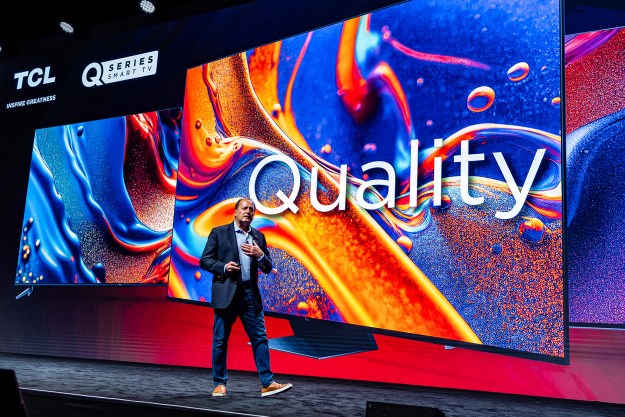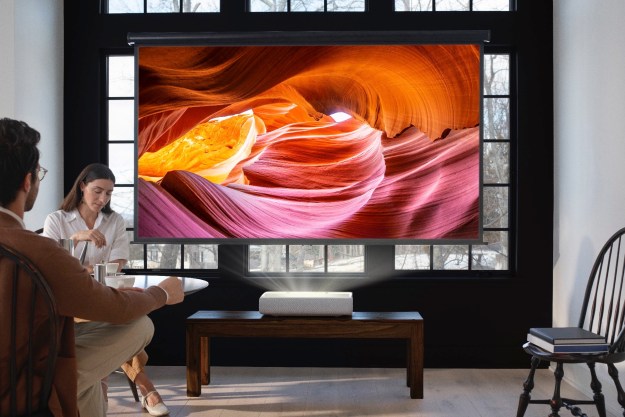Sharp’s 8K television will officially move beyond prototype status and debut as a commercially available TV in October, reports Japan’s AV Watch. Normally, this is where our inner tech-geek would be jumping up and down, hailing the development as the most exciting news since 4K launched a few years ago. But, sadly, this development doesn’t mean much for consumers — not at the moment anyway — so let’s not get too riled up just yet.
To put an 8K TV’s massive scale into perspective, consider this: 4K is roughly four times the resolution of 1080P HD at 3840 pixels x 2160 lines (8.3 Megapixels), but 8K (also known as 8K UHD and Full Ultra High Definition, or FUHD) quadruples that pixel count again — 7680 pixels × 4320 lines (33.2 megapixels) — for a picture that is 16 times higher in resolution than the 1080p TV you probably have in your home right now. The benefit of this ultra-dense pixel count? Realism. On a really large screen — say 100-inches diagonal or greater — 8K images have a sense of depth to them that comes off as almost 3-dimensional. There is no doubt, 8K looks amazing. So why aren’t we more excited?
For one thing, these new Sharp TVs aren’t aimed at your living room. The 85-inch model discussed here is outrageously expensive (roughly $133,000), and most likely will be used as a professional test monitor for those making early investigations into producing 8K video, or for large commercial and retail displays. AV Watch also suggests that these TVs could be used by surgeons performing intricate, non-invasive surgery. And from an interface standpoint, these TVs aren’t designed to work with your home theater, either. Think of these TVs as being like four 4K UHD screens smashed together, and as such, displaying an 8K image would require four individual HDMI inputs coming from a media server designed to split an 8K video up into four parts. That’s something a professional broadcast or film studio can manage, but you won’t be getting that kind of signal from your cable or satellite company any time soon.
Then there’s the issue of content … or lack of it, rather. Consumers and media are still complaining there’s not enough 4K content to enjoy on the latest
Finally, let’s remember this release is coming from Sharp, a company that has been struggling financially for several years now. In fact, the company just sold off its US TV division to Hi-Sense, a Chinese consumer electronics brand. Who knows what hands the IP for this TV will land in, or who will actually manufacturer a U.S.-bound model, if one ever makes it to the U.S. in the first place? On a more positive note, however, it could be that Sharp’s pushing this tech out now will get others, like LG, to bring their massive 8K sets to market, too, perhaps advancing 8K at a faster clip.
It’s always exciting to see consumer electronics manufacturers pushing the edge of the tech envelope, but at this point there’s absolutely no reason to think buying a brand-new 4K UHD TV is going to put you behind the times — in fact,
For now, 8K is but a glint on a very broad horizon, but it does get us thinking about where we might be in 2020.
Editors' Recommendations
- Samsung QN900D 8K TV first look: fully loaded flagship
- What is 4K? Everything you need to know about 4K Ultra HD
- Samsung’s biggest Neo QLED 8K TV comes with an equally huge price
- Hisense kicks off its U8K mini-LED TV availability with deep discounts
- Denon’s small-room 8K AV receivers start at $549






